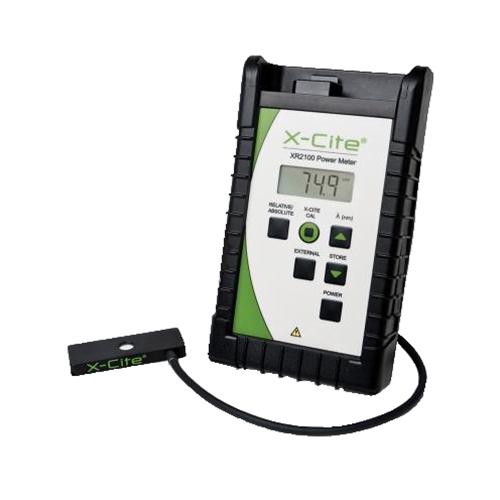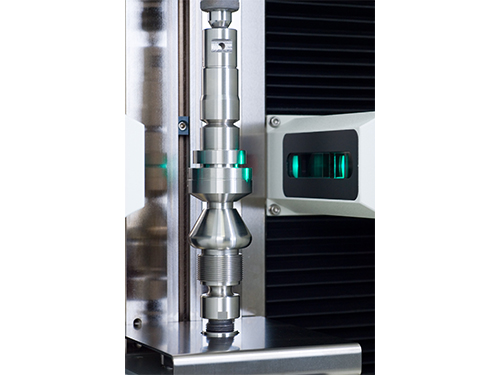Instant analytics with an optical measurement system: What to expect
Instant analytics with an optical measurement system: What to expect
Blog Article
The Function of Optical Measurement Systems ahead of time Width Strategies
Optical measurement systems have actually transformed width, bringing a level of precision that was when unthinkable. As you check out further, you'll uncover how these systems are forming the future of measurement and high quality control.
The Evolution of Width: A Historical Perspective
As you check out the background of width, you'll find that its advancement reflects humanity's quest for accuracy and standardization. From old people making use of body components as units of measurement to the growth of standard weights and procedures, each step shows our need for precision. The Egyptians built the pyramids making use of accurate measurements, while the Romans advanced engineering with their innovative measuring tools.
Throughout the Renaissance, clinical innovations shifted the emphasis towards much more empirical techniques, leading the way for contemporary metrology. The introduction of the statistics system in the late 18th century marked a considerable landmark, developing universal criteria. Throughout the 20th century, technical innovations further transformed metrology, making it possible for very exact measurements in different areas.
Today, metrology continues to progress, incorporating electronic technology and automation. This history highlights not just the significance of dimension however additionally our unrelenting search of improving accuracy and consistency in our progressively complicated globe.
Concepts of Optical Dimension Solutions
Recognizing the principles behind optical measurement systems is vital for accurate lead to assessment. You'll intend to consider basic optical principles, measurement accuracy factors, and efficient system calibration methods. Each of these elements plays a vital function in guaranteeing your dimensions are reputable and specific.
Basic Optical Concepts
While discovering optical measurement systems, you'll experience fundamental optical principles that create the backbone of precise data purchase. Light acts in predictable methods, and understanding these actions-- like refraction, representation, and diffraction-- is necessary for reliable measurements. By understanding these principles, you'll be geared up to utilize optical technologies effectively, leading the way for innovations in assessment and guaranteeing your dimensions are both dependable and repeatable.
Measurement Accuracy Variables
To achieve high dimension accuracy in optical systems, a number of factors enter into play, influencing the dependability of your outcomes. Initially, the high quality of the optical components matters considerably. Top notch lenses and detectors reduce aberrations and noise, ensuring your dimensions are accurate. Second, environmental conditions like temperature and moisture can impact measurements, so preserving a steady environment is necessary. Third, the placement of the optical system is critical; even small misalignments can lead to significant errors. The wavelength of light made use of effects the resolution and accuracy of your dimensions. By addressing these variables, you can boost the total efficiency of your optical dimension systems, leading to more reliable and accurate lead to your width applications.
System Calibration Strategies
Achieving high dimension accuracy is just part of the formula; correct system calibration methods are equally essential in optical measurement systems. To assure your system delivers trustworthy results, you must routinely adjust it using typical recommendation products. Begin by readjusting the optical components, like lenses and mirrors, to decrease systematic errors. Next off, employ well-known measurements to verify the system's output and make essential modifications. It's also crucial to represent environmental variables-- temperature and humidity can affect measurements. Implement a routine calibration schedule to preserve consistency gradually. Finally, document all calibration treatments and outcomes; this will assist you track efficiency and resolve any drift in accuracy. With these strategies, you'll enhance the dependability of your optical measurement system.
Key Technologies Behind Optical Dimension
Optical dimension systems rely upon a number of vital technologies that improve accuracy and effectiveness in assessment. One essential innovation is interferometry, which utilizes the disturbance of light waves to gauge small displacements and surface area abnormalities with severe accuracy. You'll likewise find laser scanning systems, which capture thorough 3D data of objects swiftly, making them invaluable for dimensional evaluation.
Furthermore, CCD and CMOS sensors play a significant duty in converting light right into electric signals, permitting high-resolution imaging and accurate measurements. Advanced formulas for picture handling additionally improve dimension accuracy by assessing data in actual time, filtering out noise and improving features.
Ultimately, fiber optics give versatility and the capability to determine in challenging settings while preserving signal integrity. By leveraging these technologies, you can accomplish superior outcomes in your metrology jobs, guaranteeing that your dimensions are both precise and reliable.
Applications of Optical Dimension in Sector
As industries significantly demand accuracy and effectiveness, the applications of optical dimension systems have actually become vital throughout numerous industries. In manufacturing, these systems aid you keep an webpage eye on dimensions and resistances in real-time, guaranteeing quality assurance without time-consuming hand-operated checks. In the vehicle industry, optical measurements help in aligning components with accuracy, boosting security and performance.
In electronic devices, you're making use of optical approaches to inspect minute functions on motherboard, discovering flaws that could result in failures. The aerospace industry take advantage of non-destructive testing methods, enabling you to examine products and parts without compromising their integrity.
Optical measurement also plays a crucial duty in fabrics, making sure fabric dimensions fulfill specific specifications. optical measurement system. With their ability to give high-resolution data swiftly, these systems equip you to make informed decisions, improve procedures, and inevitably drive development throughout your sector
Enhancing Accuracy and Performance in Measurements
When you think about boosting accuracy in measurements, precision in your measurement methods is necessary. By simplifying these procedures, you can accomplish quicker results without sacrificing quality. Let's discover just how taking on innovative optical dimension systems can elevate both accuracy and performance in your job.
Precision in Measurement Techniques
Accuracy in measurement techniques is important for attaining reliable outcomes in metrology, particularly given that tiny inconsistencies can lead to considerable errors. By using sophisticated optical dimension systems, you can improve the precision of your measurements. In enhancement, specific dimensions allow you to keep high quality control, making sure that products satisfy rigid requirements.
Enhancing Measurement Processes
To improve precision and efficiency in measurements, enhancing your dimension procedures is important. Beginning by adopting optical measurement systems that provide real-time information, lowering the time spent on manual recording. These systems frequently integrate flawlessly with existing software program, allowing you to automate information collection and analysis.
Next, standardize your measurement methods. By executing constant treatments, you minimize variability and improve repeatability. Don't forget to on a regular basis calibrate your equipment to assure its accuracy.

The Effect of Optical Dimension on R & D
As scientists undertaking to push the borders of development, optical dimension systems have actually become vital tools in the development procedure. These systems offer you with specific, real-time why not try these out information that enhances your capacity to analyze complicated materials and structures. In different areas, from biotechnology to aerospace, you rely upon optical dimensions to optimize designs and improve item efficiency.

With high-resolution imaging and non-contact techniques, you can decrease example disruption, permitting even more exact outcomes. This capacity to record minute details accelerates your R&D cycle, letting you repeat designs swiftly and efficiently. In addition, optical measurement promotes partnership throughout self-controls, as the information created is commonly easily interpretable and shareable.
Ultimately, integrating optical dimension systems into your research study not just increases performance yet likewise deepens your understanding of the phenomena you research study. By leveraging these innovative strategies, you're much better geared up to introduce and remain ahead in an affordable landscape.
Future Fads in Optical Measurement Equipments
With the fast improvement of innovation, you're most likely to see substantial shifts in optical dimension systems that will redefine their application across various industries. You'll see a step toward increased automation and assimilation of man-made intelligence, permitting real-time information analysis and boosted accuracy. Miniaturization is an additional pattern; compact gadgets will make it possible for dimensions in tighter spaces, making them perfect for fields like aerospace and biomedical applications.
Expect to see systems that can run in challenging settings, supplying trustworthy measurements in extreme problems. As these technologies assemble, you'll locate that optical measurement systems not only boost accuracy but likewise improve operations, ultimately driving development and efficiency in your jobs.
Regularly Asked Inquiries
How Do Optical Measurement Equipments Compare to Conventional Dimension Techniques?
Optical dimension systems offer greater accuracy and faster outcomes compared to standard techniques. You'll discover they catch more data points precisely, lowering human error and raising reliability, making them a preferred choice in various applications.
What Industries Advantage Many From Optical Dimension Solutions?
You'll discover markets like aerospace, automobile, and electronics benefit most from optical dimension systems. These fields count on specific dimensions to ensure high quality and performance, enhancing performance and lowering expenses with advanced technology.

Are Optical Dimension Solutions Expensive to Execute?
Optical dimension systems can be costly to implement, yet their accuracy and performance commonly validate the expense. Investing in such technology can result in significant lasting savings and enhancements in quality across different applications.
What Skills Are Needed to Run Optical Measurement Solutions?
To run optical measurement systems, you'll require solid analytical skills, focus to detail, and efficiency in software tools. Knowledge with optics and an understanding of measurement concepts will additionally boost your efficiency and efficiency.
How Do Ecological Factors Affect Optical Measurements?
Ecological variables like temperature, air, and moisture top quality can misshape optical measurements. You'll discover variants in precision as a result of light disturbance or refraction. optical measurement. Maintaining stable conditions is crucial for reputable and specific optical measurement results
Conclusion
In summary, optical measurement systems have a peek at these guys are revolutionizing width by supplying unrivaled precision and performance. As you check out future trends, you'll see just how the combination of AI and automation will continue to boost measurement practices, driving technology and enhancing quality control.
Achieving high measurement precision is only component of the equation; correct system calibration methods are equally essential in optical measurement systems.When you think regarding enhancing precision in measurements, accuracy in your measurement strategies is vital. By making use of innovative optical measurement systems, you can boost the precision of your measurements.To enhance precision and efficiency in dimensions, improving your measurement procedures is important. Just How Do Optical Dimension Systems Contrast to Standard Measurement Techniques?
Report this page